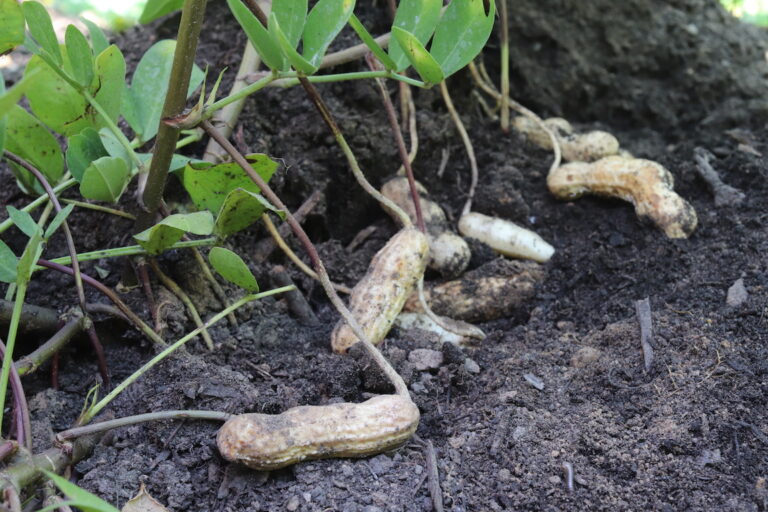Welcome to the world of Arachis hypogaea, more commonly known as the Peanut Plant. This unassuming marvel has its origins traced back to the vibrant landscapes of South America. Its botanical name might sound complex, but its essence is refreshingly simple. With delicate yellow flowers that mature into the familiar underground pods, this plant has mastered the art of hiding its treasures.
While growing your own peanuts demands a tad more effort than your average houseplant, the journey is both rewarding and educational. Let’s dive into the realm of peanuts, where nature’s bounty meets the joy of cultivation.
Peanut types:
- Runner
- Virginia
- Valencia
- Spanish
Care
- Water: Peanuts require about 1 inch of weekly rain or irrigation. Key watering times: after planting for germination, and 60-110 days later as peanut clusters form. Pause watering about a week or 10 days before harvest. Drip irrigation and dry-but-moist soil work wonders.
- Light: Peanuts are sun-worshippers, craving a daily dose of eight hours of sunlight.
- Soil: Peanuts thrive in loose, well-drained, slightly acidic soil (pH 6.0–6.5), steering clear of compact clay and poor drainage.
- Temperature and Humidity: Peanuts flourish at 86-93°F (30-34°C), with higher temps risking flower damage. A touch of humidity while growing is fine, but dry conditions pre-harvest are the finishing touch.
Planting and growing
Growing your own peanut at home haven is simpler than you might think. You need to satisfy all environmental factors for growing you peanut. Most important factor is the light. The peanut needs 8 hours of direct full sun. You need to check your growing stages as they are growing to ensure you plant is healthy and ready to be harvested.
Pruning
Snipping away at peanut branches not pulling their weight sounds like a win-win. This smart move cuts down on nutrient hogging, letting the thriving branches and pods soak up the spotlight. The result? More branches, more bounty, fuller grains, and a great harvest.
Common pests
Frequently Asked Questions
Peanut plants thrive in warm climates with full sun, making regions like the southern United States ideal. Well-draining, sandy loam soil with a slightly acidic pH range of 6.0-6.5 suits them best.
Can you grow peanuts indoors?
If you’re thinking about starting peanut plants inside and moving them outside later, it’s important to know that it can be a bit tricky. These plants love the sunshine and need plenty of room to grow, so indoor growth might not be the best option. However, with enough light and space, it’s definitely doable!
How many peanuts do you get from one plant?
On average, a single peanut plant can produce around 20 to 50 pods, with each pod typically containing two peanuts.
How long do peanuts take to grow?
Starting from when you put the peanuts in the ground to the exciting harvest time, the peanut-growing adventure takes about 140 to 150 days. This longer stretch is all about giving those peanuts the time they need for their special underground peg growth and gradual journey to full maturity.
Do peanuts take a lot of water to grow?
Peanuts are pretty easygoing when it comes to water. While they’re growing, they like to sip on around 1 inch of water per week. Just remember, keeping things consistently moist is key, especially when they’re germinating and forming those precious pods.


